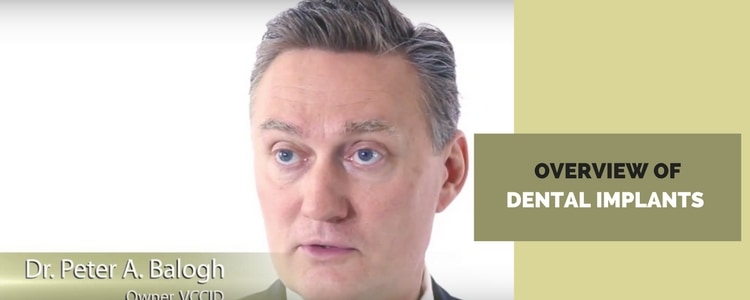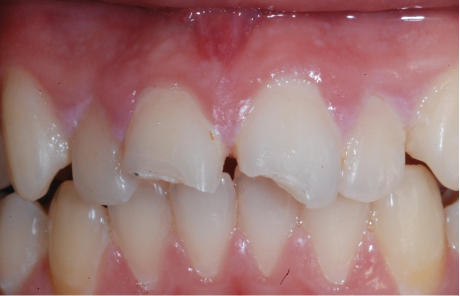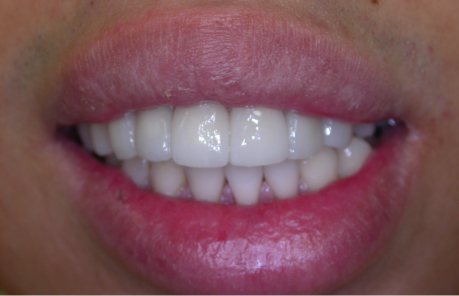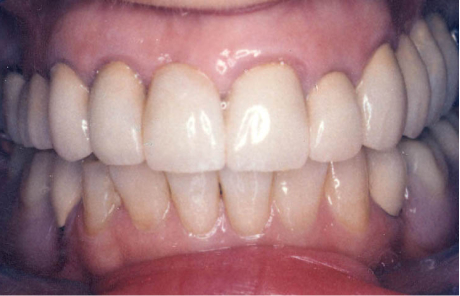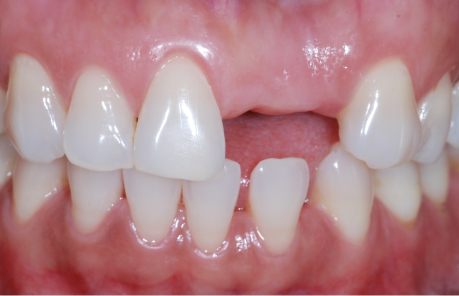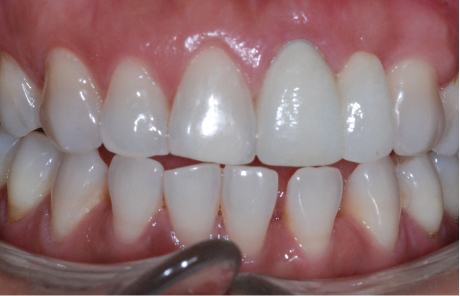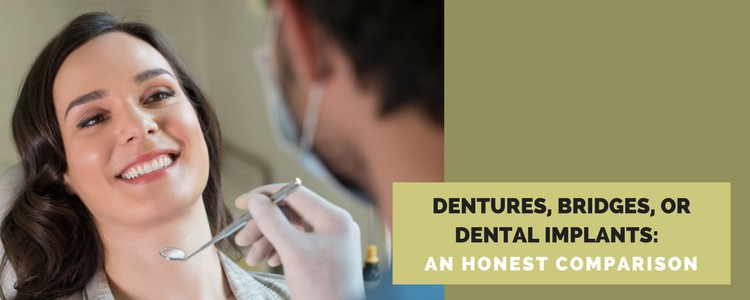History of Dental Implants
So, so far what we’ve covered is what happens when we lose teeth. So next, let’s talk about dental implants. What’s a dental implant? What’s the history of them? Well, first of all I’ll give you a brief history, but I just want you to pause and think for a second and guess, I’d like you to guess how long do you think dental implants have been around? When I’m doing these seminars, people throw up their hands and say, “well I think they’ve been around for ten years,” then someone says, “no, no, I know someone that’s had them…You’ve done them twenty years, so I know they’ve been around for at least 20 or 30 years.” Some of them might guess 50 years, but rarely did anybody ever think that they’ve been around longer than that.
The first Dental Implants were placed about 5,000 years ago
Well, I can tell you they’ve been around for about 5,000 years. And how do we know that? Well, in Egypt, they’ve found some mummified remains, obviously somebody who was royalty, and in those mummified remains, they found that that person had been missing some teeth, and they used some stones or shells, and they literally hammered them into the jaw. They also found the same thing among the Mayans. Around 100 AD they found some ruins, and there were mummified remains. In those remains, they were surprised to find the lower jaw had some stones or shells that were also placed and hammered into the jaw. In this next picture, you’ll see the lower jaw of this Mayan, and what you see there are mostly teeth but if you take a look in the front those teeth that are circled are actually stones that were shaped and hammered into that jaw. What is even more surprising is that they know that this person survived the procedure. How do they know that? Because they can see bone has grown in around those stones. So although this person eventually succumbed and died we know that the procedure that was done was viable and worked. How long it worked, well that we don’t know, but we do know that this person was able to have dental implants 2,000 years ago and of course, in Egypt, as much as 5,000 years ago.
Modern Day Implants
In today’s world, implants are not really that old, although implants were done well over 100 years ago. Back in the early 20th century, there were a number of dentists in Europe and North America looking at trying to find an alternative to replace missing teeth. Of course, dentures were around. George Washington’s wooden dentures are world famous. They were bridges, and things were attached to the adjacent teeth, but once we’ve lost enough teeth there was really nothing available besides dentures. So dentists at that time were trying different things. In the jawbone, they were taking a tooth out and removing it, extracting a tooth and placing it somewhere else in the jaw, and they were taking other teeth or dental implants made of gold, porcelain, silver, lead, carbon, other ceramics, and implanting it in the jaw. And the interesting thing is it actually worked reasonably well. The problem was it didn’t work reasonably well all the time. The success rate was not great. I don’t know what the exact numbers were but it was certainly far from 100 percent, maybe not even 50 percent. The other problem is there wasn’t a lot of science behind it. It was, in a sense, almost experimental. They were trying different things and not really understanding why some things worked and some things didn’t work.
Accidental Discovery
Today’s modern implants actually came about by accident. It started off at around 1952. A couple of medical doctors were doing some research on how blood vessels grow in bone and they wanted to look at how they grow microscopically. So in order to do that they had a camera attached to a microscope. They put it in a little cylinder, housed it in a little cylinder, and they were doing animal studies, and it was on rabbits, and they put this little cylinder with this camera in the forearm of a rabbit and they watched how the blood vessels grew over several months. After about three months, they went to retrieve those cameras because no doubt, those cameras were very pricey and expensive and they wanted them back, and they got quite a shock and surprise because when they went to remove them they found they couldn’t get them out. They eventually did get them out but they literally had to drill around them and they found this is really unusual. When they went to study that to figure out what’s going on and why they couldn’t get the cameras out, they looked at it histologically, microscopically, and they found the bone had actually grown and fused to the cylinder of the camera—the same cylinders that they had placed in the forearm. This was quite unusual because for years and even today stainless steel is used many times for screws, pins, plates, and it’s very biocompatible. The body will accept it but never does the bone actually fuse to those pins, plates, or screws. In fact, they sometimes come loose and have to be removed months or years later, but in this case, the bone had actually fused to the surface. And what was unique was they had used—not stainless steel, but a type of metal called titanium and as much as this was a disaster for their cameras, a light bulb went off and said, “gosh if bone can fuse to this metal maybe there’s something going on here that we don’t understand and maybe something what we can do with.”
So for the next 10 to 15 years, they did a number of studies on animals where they took titanium cylinders and placed them typically in the jawbones of dogs, and found that every time, if they followed a certain protocol, the bone would fuse to the cylinder. Starting in 1962, they started the first clinical trials and research on human beings to see if these titanium cylinders can be used as artificial teeth in people who had missing teeth. These titanium cylinders were put into place. They followed a certain protocol and months or a year later, these were uncovered, and they found almost all the time, the bone had grown to the surface of these titanium cylinders. The success rates in the early stages were phenomenal. They had 81 to 88 percent success in the upper jaw and well over 90 percent success in the lower jaw. This was a brand new procedure and they were getting phenomenal success with it. Even today there are some procedures that are done in medicine that probably do not get the same success rates. They’ve been doing them for years and years and have a good understanding, and here’s a brand new procedure that’s so successful. It was phenomenal.
Rise of Titanium Implants
So shortly after that, titanium dental implants were approved for the general public and by 1982, there already several implant manufacturers worldwide. And this is just a short list of them, and this is a slide borrowed from a Dr. Charlie English in the United States showing all the different types and varieties of dental implants and as much as they look different they’re all very similar. They’re all made out of titanium or a titanium alloy. Some have smooth surfaces, some have rough surfaces, some have threads, some have holes, some get pushed in place, some are threaded in place, but what’s what’s common amongst all of them, is that they’re made out of titanium or titanium alloy. That’s what allows the bone to fuse to the implant. Size, shape, and other factors are important and as the years have gone on, we have a better understanding of what works better in the long term. So the last 30 to 40 years have seen scientific changes, clinical changes and advances in dental implants.
Better Understanding of Bone Physiology
Today we have a much better understanding of bone physiology. Why does the bone fuse to the implant and it doesn’t to other materials? We have a better design of prosthetics of teeth, of how could we put teeth in place, and how could we build the teeth on top. We have a better understanding of the long-term forces that are put on these implants and that affects the long-term success. As much as there is immediate success 80-90% percent with the implants, the long-term success was not necessarily as great. But now it is very high because we have a better understanding of how the forces are placed on those implants once they become fused, or what we call integrated into the bone.
A lot of people, as I showed earlier, have got a lot of bone loss and may not have enough bone for placing implants. So, one of the things that we do as implant dentists is we find ways to regrow the bone. We do bone grafting procedures to regrow the bone, so implants can be placed. There’s been a lot of research and studies on how to do that and how to do that more easily, and how to build greater volumes of bone, so that people can have implants, even if they’ve been missing teeth for a long time.
There’s been changes in design, as much as you saw a wide variation in that earlier slide of different types and design. There’s certain designs that are good designs, there are certain designs that are not as good, and all of the implant companies have slowly kind of borrowed each other’s good qualities. The implants are now are looking more and more similar today than they did 40-50 years ago.
Increase in Cosmetic and Aesthetic Interest
There’s been a huge growth in cosmetics and aesthetics in dentistry and this has also filtered down to implants. Forty-fifty years ago, implants were put in place, teeth were put in place, they were functional, but they weren’t always very aesthetically pleasing. Today, because of our demands and abilities, we can actually make a tooth. We’ve matured such that we can not only put an implant in place, but we can also make this look exactly like a natural tooth, and almost indistinguishable from a natural tooth. It certainly depends on what our starting point is. For somebody who’s lost a lot of bone, it’s going to be more challenging, but somebody who’s got good bone and gum tissue in height and volume, it’s much easier to do that. So we can make teeth not only functional, but we can also make teeth look very natural.
Growth of Ceramic Implants
Another change that’s occurred is there’s been a growth in what we call ceramic implants. These are typically out of a different material called zirconia. They also have the ability to fuse to the bone. There are a few people who have concerns or have sensitivities to metals and hence the ceramic implants have been developed and they’re just recently become on the market and become available pretty much worldwide.
Where we’re going in the future is there’s a lot more development in bone growth, in bone regeneration techniques and this also deals with stem cells. There’s a lot of studies being done on how to actually not only regrow teeth, but also how to grow a bone, and grow it much easier, more predictably and more successfully.
